I saw some interesting things in the first year of the seven-year longitudinal case study of engineering skills of young children from grades K to 6. Each year, they will be given a variety of materials and be asked to design an amusement park ride. This year, I observed 9 kindergarten aged children performing the task.
The first thing to note was that 7 of 8 children choose to use LEGO blocks to construct their rides. A few children were very interested in using the motors and sensors. However, I decided not to bring laptops, which would be needed to do so, because they have not used LEGO WeDo materials in school yet. One very creative student used mixed materials, combining craft materials with LEGO materials. I had a difficult time getting this student to leave. He said that he could have stayed all day. I have noticed this student previously during indoor recess very engaged in similar project using craft materials.
I noticed that many of the children engaged in self-talk as they built. Most were quiet initially but started talking as I gently asked questions about what they were doing. The self-talk varied from pragmatic (centered around their building) to fantasy talk (centered around a drama that the building supported). This made me wonder about the importance of self-talk during building and how it changes over time. Does it change from fantasy to pragmatic self-talk over time?
The range of products was quite remarkable for 5 and 6 years olds. There were 2 projects with sophisticated gear trains while other did not have moving parts. See photos below.
I learned quite a bit about the logistics of such a project.
- Make sure the video camera is optimally positioned before starting. Don’t be afraid to move it. The amount of disk space required and processing time to fully videotape everything is very large. I will probably try to an external hard drive just for this project.
- Take a bird’s eye view and 4 side views of each finished project.
- Make sure each project is fully taken apart before the next student comes in. [It would be great to be able to save them but that would detract from the parts for subsequent students.]
- Be careful how you introduce the task. Don’t feed examples of rides unless absolutely necessary. Be clear that rides can be based on real rides or made up.
- Be careful that all materials are equally accessible to the student.
- I did see that the level of fine motor skills at this age could be frustrating to students in that it was difficult, at times, to realize their ideas easily.

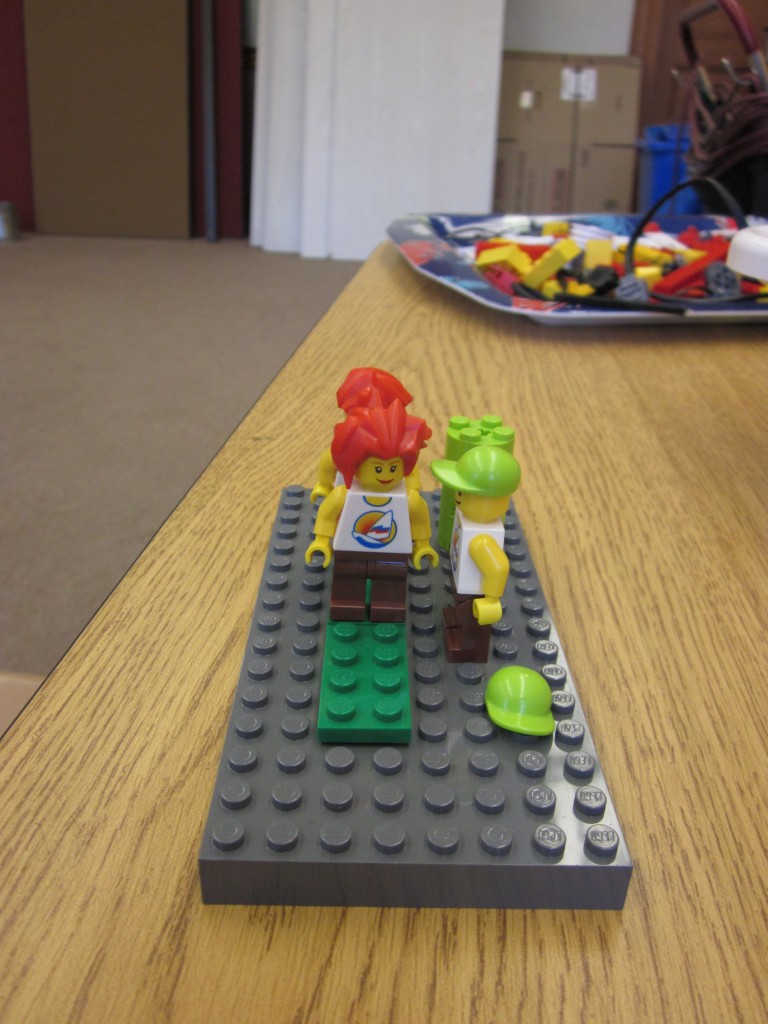
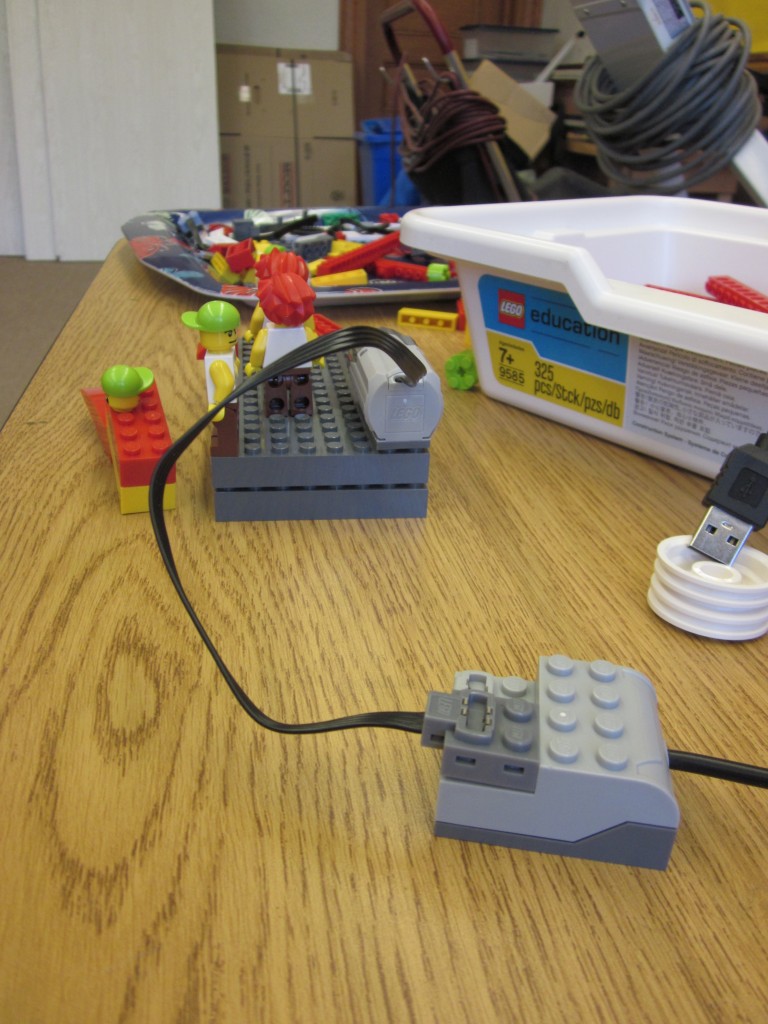
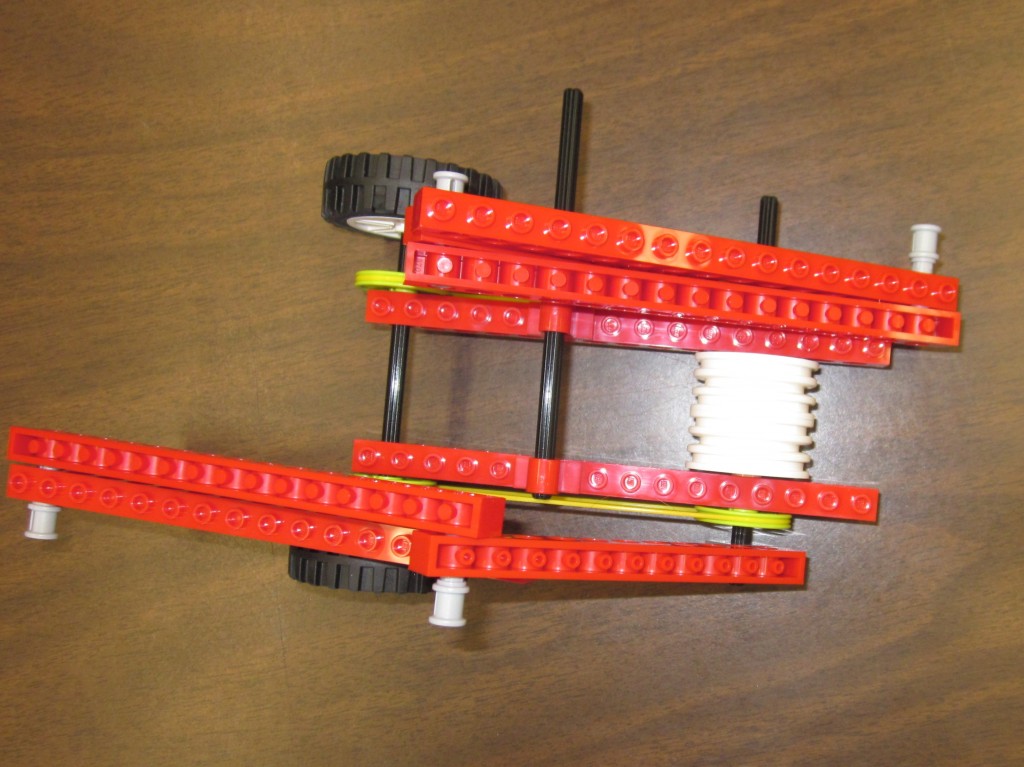
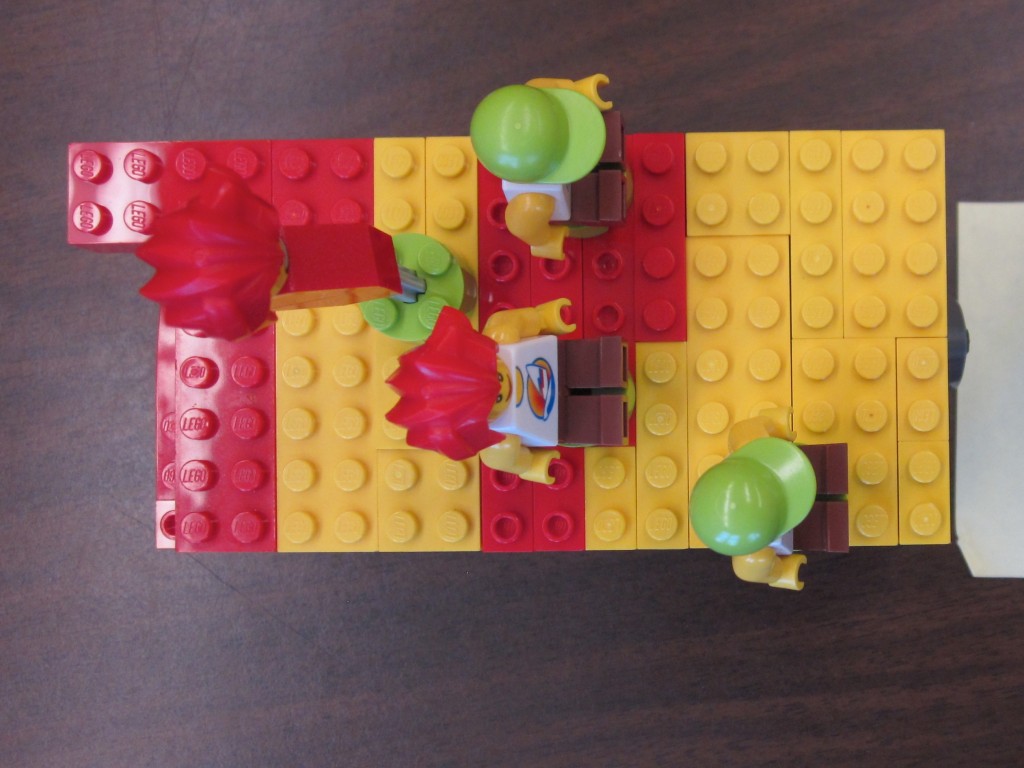
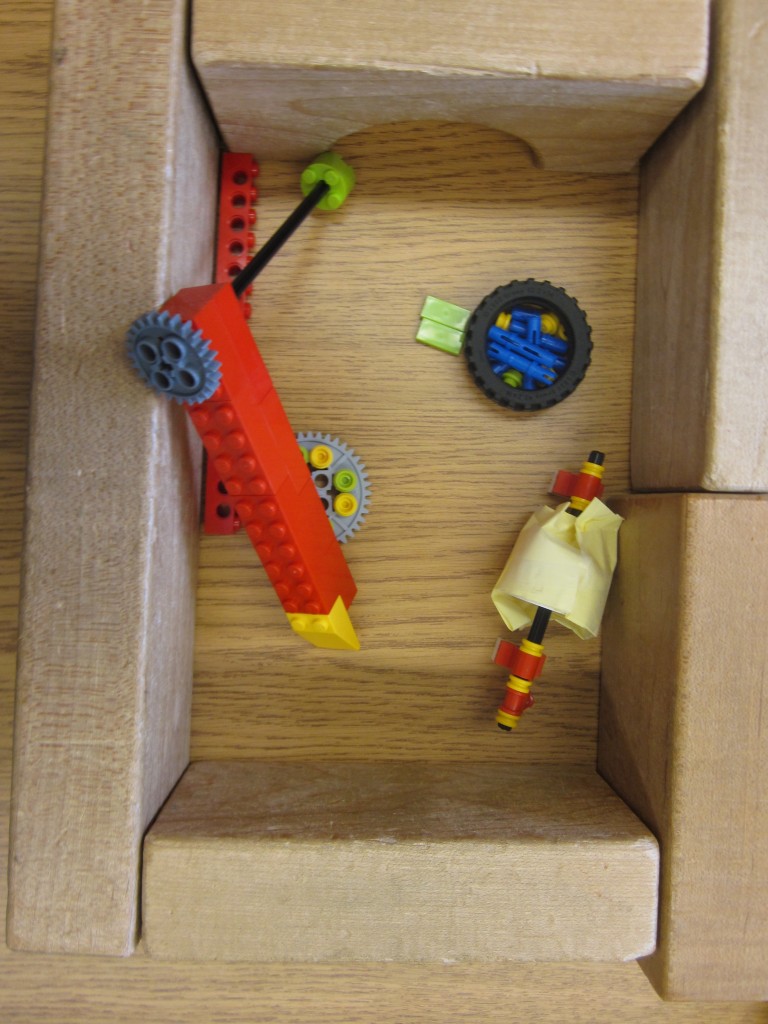
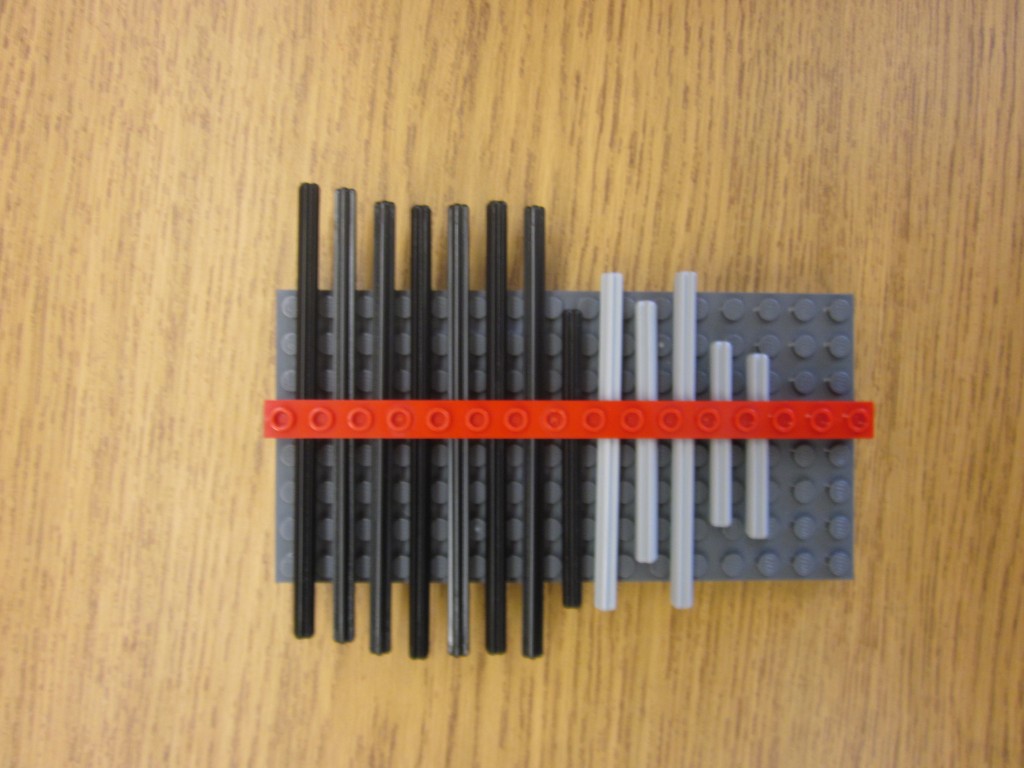
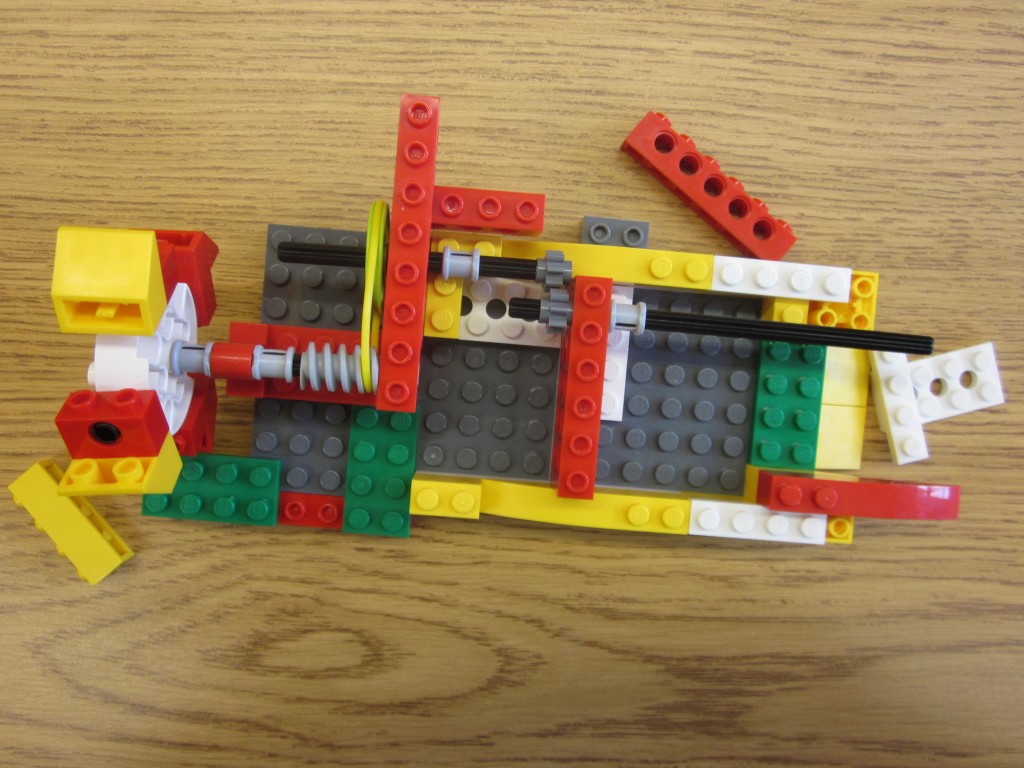

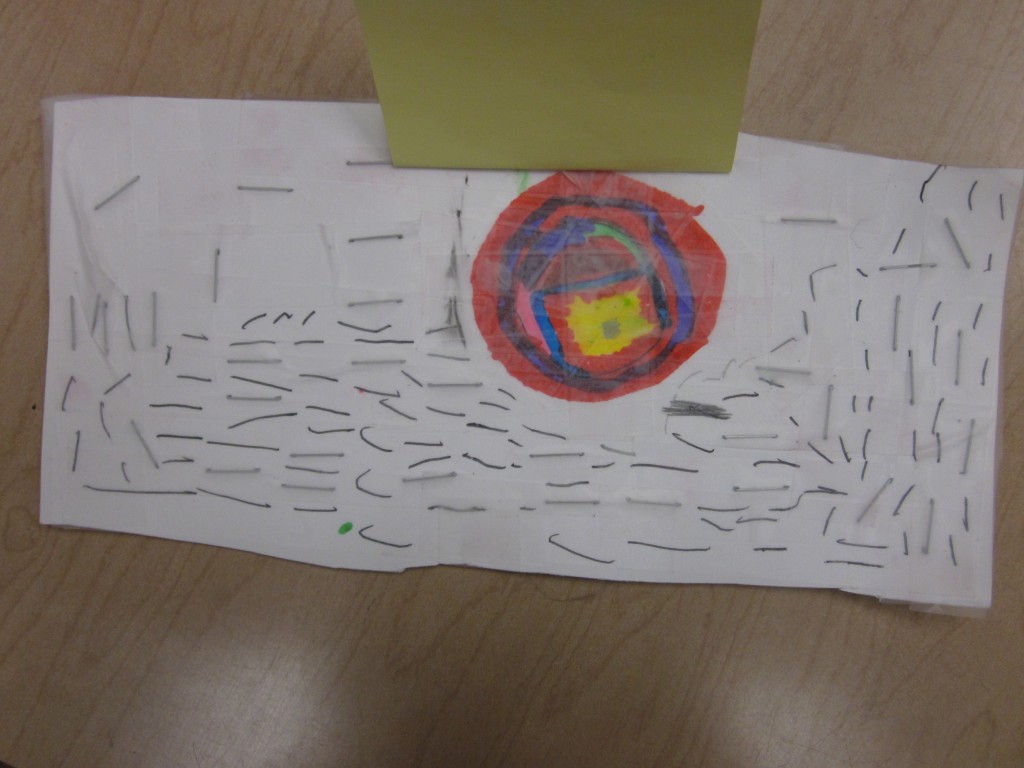
Thank you for these observations. As an Early Childhood teacher, this observation is not surprising. Children use Lego in its various forms to create and communicate from 2 years of age. So why wouldn’t they want to keep communicating this way expressing themselves through creative thinking? At school, we shut them down. We tell them that these ways of thinking are not valued and then we try to teach them other ways of thinking creatively as if it was our idea in the first place.
Children naturally want to combine materials. Teachers and parents are the ones who tell them not to be so untidy.
Interesting observations. I wonder whether the students identify you with Lego and picked those materials due to this? I am assuming here that the students had access to the variety of materials in a way that Lego was given prominence. I’m also assuming that you were the one who supervised the exercise.
This is an exciting project!
Cheers, Wayne
Actually, Wayne, I have only done BeeBots with the K kids so I am not sure they associate me with LEGO. I did try to put out the materials in a neutral way so none was given prominence. I was the interviewer. Thanks for commenting (Rosie too). This should be very interesting over time.